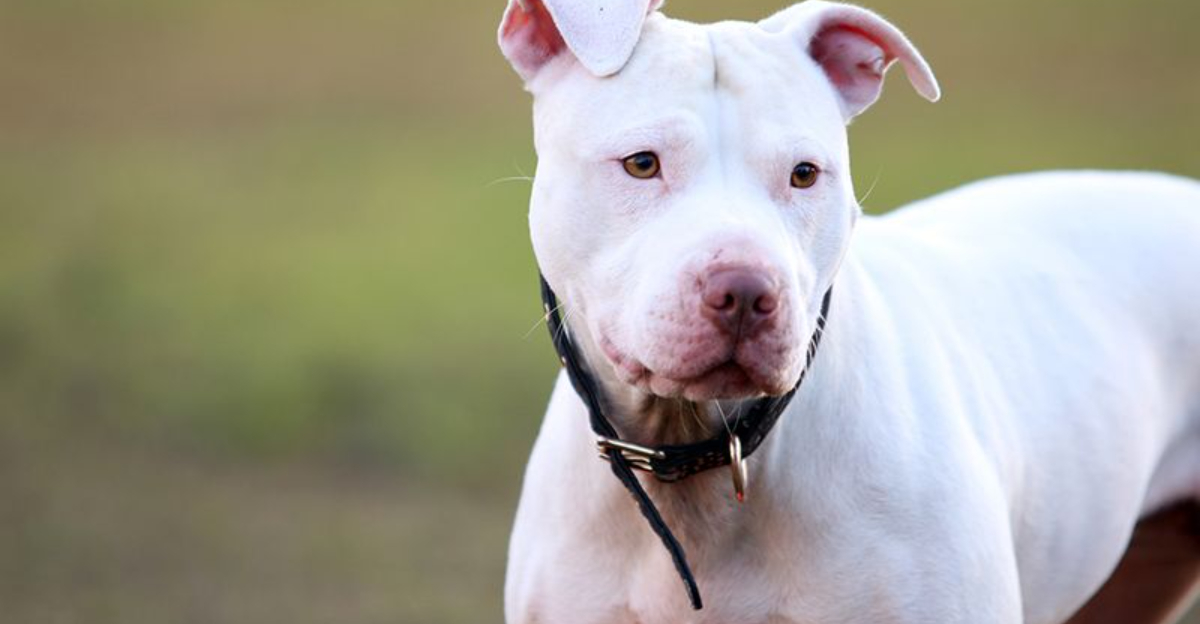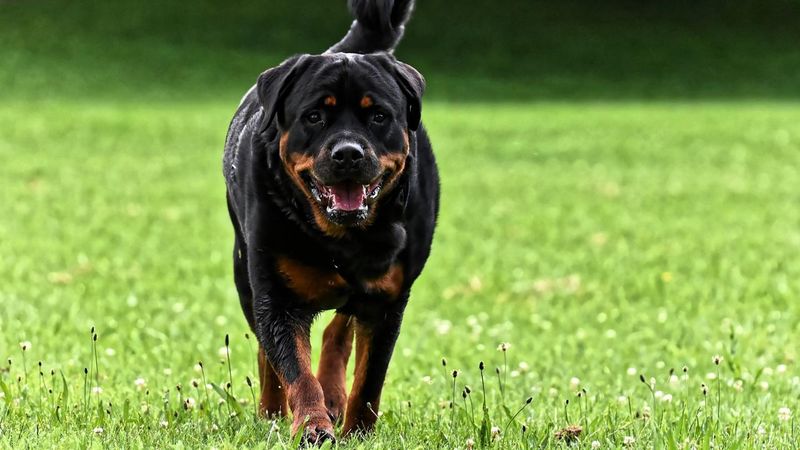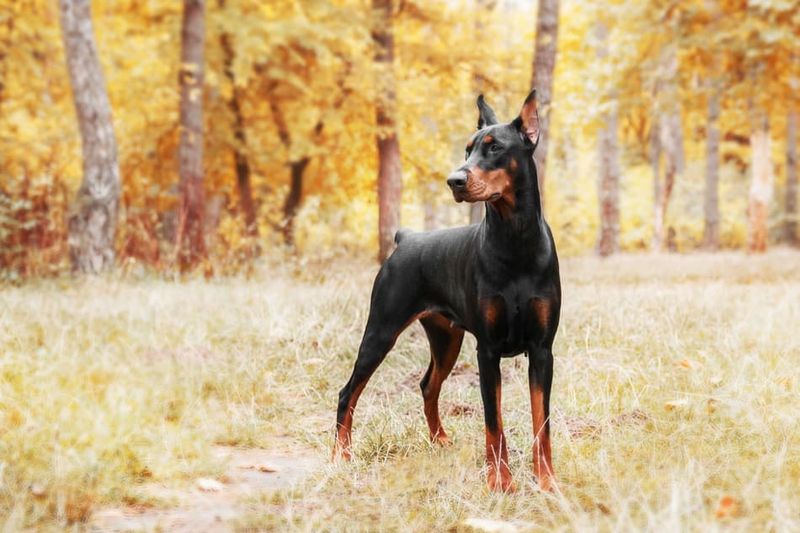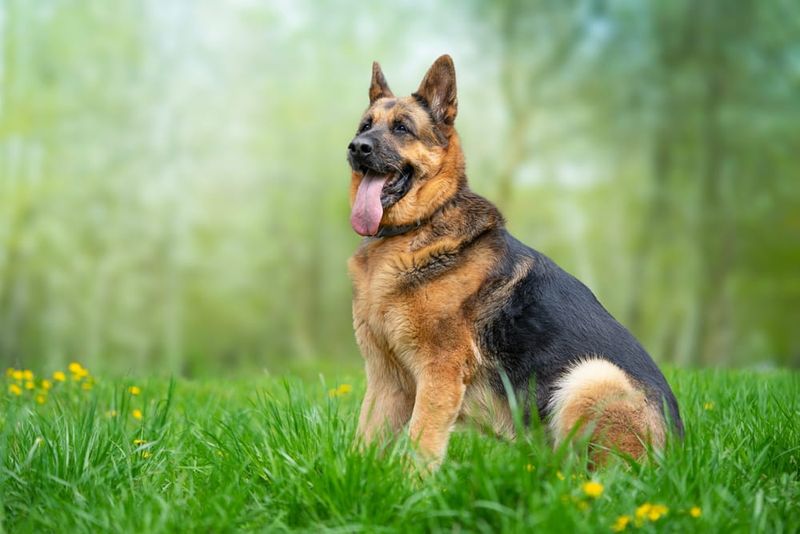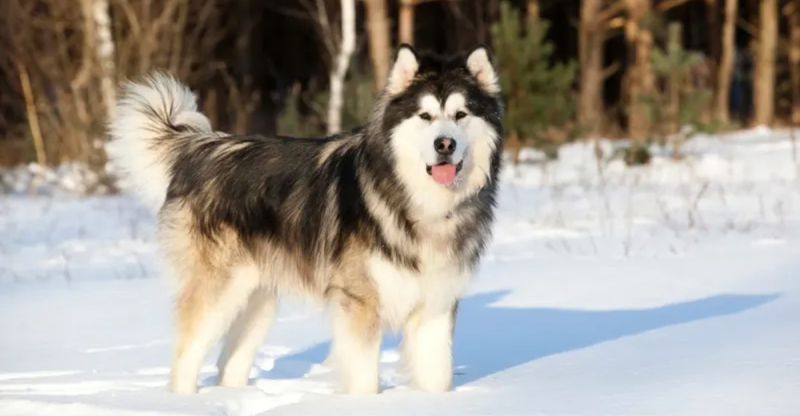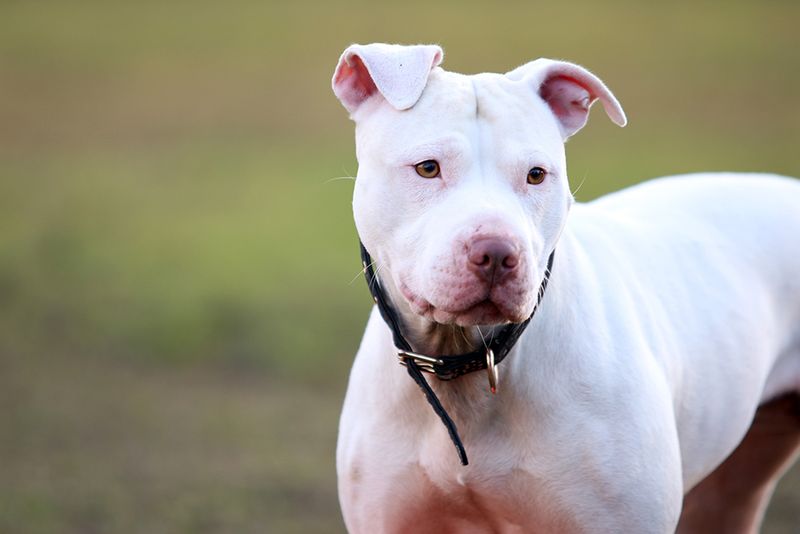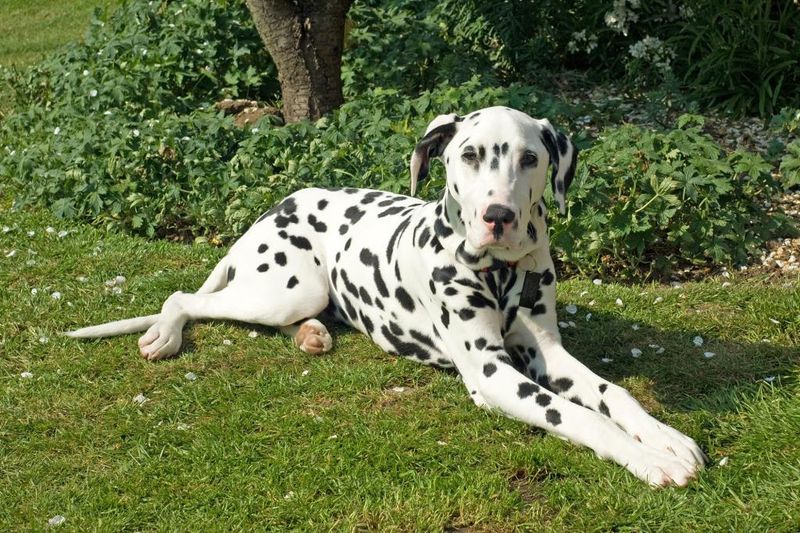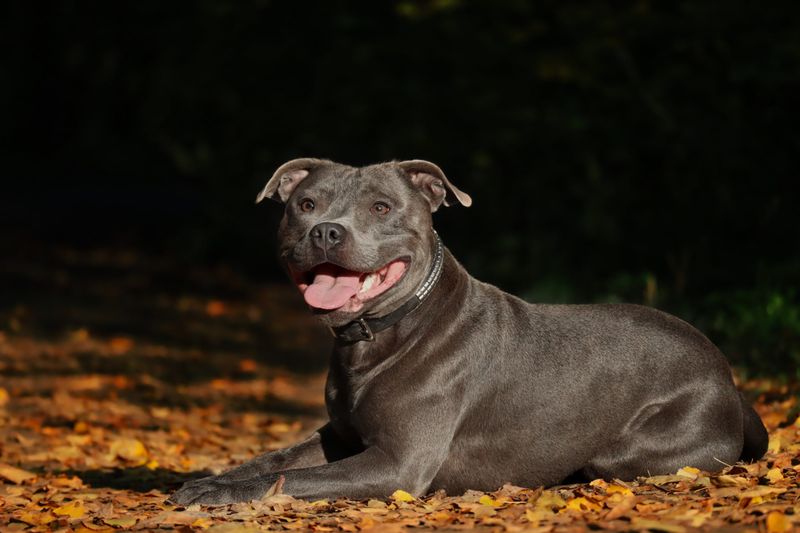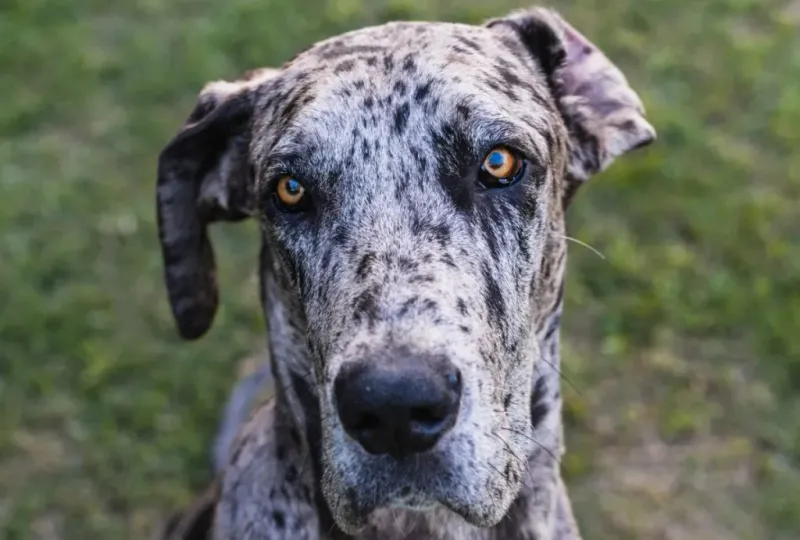Discover the controversial world of canine bans as we explore 15 dog breeds that have been prohibited in 23 states across the United States. These bans often stem from perceptions of aggression, size, or historical incidents associated with specific breeds. Each breed has its own unique story and characteristics, yet they share the common fate of being restricted in various regions. This article provides an in-depth look into why these particular breeds are blacklisted, examining their traits, backgrounds, and the societal implications of such bans. Join us as we uncover the diverse narratives behind these misunderstood canines.
Rottweiler
With its striking appearance and commanding presence, the Rottweiler is another breed that faces restrictions. Often portrayed as guard dogs, Rottweilers are naturally protective and can be gentle companions with proper training.
Unfortunately, their strength and assertive nature can lead to challenges if not adequately managed. The breed’s origin as a herder and protector dates back to Roman times, where they were used to drive cattle.
Despite the bans, many enthusiasts appreciate their intelligence and loyalty, advocating for responsible ownership and better public understanding of breed-specific behavior.
Doberman Pinscher
The Doberman Pinscher, with its sleek body and alert stance, exudes both elegance and strength. Originally bred in the 19th century as a guard dog, Dobermans are known for their loyalty and intelligence.
Their protective instincts, while beneficial in security roles, have led to their inclusion in restricted breed lists. The bans often stem from a fear of aggression, yet many owners attest to their affectionate nature when properly socialized and trained.
This breed requires an active lifestyle and firm, consistent leadership to thrive as loving and obedient companions.
German Shepherd
Renowned for their versatility and intelligence, German Shepherds are often seen in roles ranging from service dogs to family pets. However, their strong protective instincts can sometimes lead to misunderstandings.
Despite their widespread popularity, they are occasionally banned due to incidents involving poorly trained individuals. Their history as working dogs is rich, with roots in herding and police work.
Owners often praise their trainability and devotion, emphasizing the importance of positive reinforcement and early socialization to prevent any behavioral issues.
Alaskan Malamute
The majestic Alaskan Malamute, known for its strength and endurance, was originally bred for sledding in harsh Arctic conditions. Their wolf-like appearance often leads to misconceptions about their temperament.
Though gentle with family, their independence and strong prey drive can be challenging for some owners. Bans are sometimes enacted due to their size and potential for escape.
To thrive, Malamutes require physical exercise and mental stimulation. Many owners cherish their playful and affectionate nature, advocating for better understanding and management rather than outright bans.
Chow Chow
The distinctive Chow Chow, with its lion-like mane and scowling expression, is a breed that commands attention. Originating from ancient China, they were once used as guard dogs and hunting companions.
Their aloof nature and strong-willed personality can lead to challenges in obedience, contributing to their presence on banned lists. However, with patient training, they can form deep bonds with their families.
Despite their reputation, many Chow owners adore their loyal and protective traits, advocating for responsible ownership to prevent misunderstandings and incidents.
Pit Bull Terrier
In the realm of controversial canine breeds, the Pit Bull Terrier often takes center stage. Known for its muscular build and strong jaws, this breed is often misunderstood. Despite its reputation, many owners vouch for their affectionate and loyal nature.
The bans often arise from a history of dog fighting and incidents of aggression, which have overshadowed the breed’s potential as a loving family pet. Many advocates argue that environment and upbringing play a significant role in a dog’s behavior, not just breed alone.
Interestingly, the breed’s history dates back to early 19th-century England, where they were used in bull-baiting.
Dalmatian
Famous for their distinctive spots, Dalmatians are often associated with firehouses and charming film portrayals. However, their energetic and sometimes stubborn nature can lead to challenges.
Originally bred as carriage dogs, their history involves guarding and accompanying horses. Today, they require ample exercise and mental stimulation to prevent boredom-related behaviors.
Though occasionally banned, many appreciate their playful spirit and unique appearance, advocating for knowledgeable training practices to ensure they are well-adjusted companions.
American Bulldog
The American Bulldog, with its powerful build and confident demeanor, often finds itself on restricted lists. Known for their loyalty and protective instincts, they can be gentle family companions with proper guidance.
Their reputation stems from their history in bull-baiting and farm work, where strength and tenacity were prized. Today, they thrive in homes that provide clear leadership and socialization.
Owners cherish their affectionate nature, emphasizing the importance of understanding breed characteristics to foster positive interactions and prevent misconceptions.
Presa Canario
With roots in the Canary Islands, the Presa Canario is a breed known for its strength and guardian instincts. Their imposing presence often leads to bans, especially in areas concerned with public safety.
Originally bred for working livestock, they require experienced handling and firm training to channel their natural protective instincts positively.
Despite their reputation, many owners appreciate their loyalty and obedience, advocating for education and responsible ownership to dispel myths surrounding the breed.
Akita Inu
The Akita Inu, hailing from Japan, is a breed steeped in tradition and symbolism. Known for their dignified and courageous nature, they are often viewed as loyal protectors.
Their strong-willed personality and independence can pose challenges, leading to bans in certain regions. Early socialization and consistent training are key to managing their assertiveness.
Admirers of the breed celebrate their unwavering loyalty and bond with families, advocating for informed ownership and deeper understanding of their unique traits.
Bullmastiff
Originally bred as gamekeepers’ companions, Bullmastiffs are known for their protective instincts and calm demeanor. Their large size and strength have led to bans in areas concerned with potential threats.
Despite misconceptions, they are often gentle giants, forming strong bonds with their families. Proper training and socialization are crucial for this breed to thrive.
Owners value their loyal and watchful nature, advocating for responsible management to prevent incidents and ensure they are well-adjusted members of the household.
Staffordshire Bull Terrier
Affectionately known as “Staffies,” Staffordshire Bull Terriers are often misunderstood due to their physical resemblance to other banned breeds. Known for their courage and tenacity, they are also incredibly affectionate.
Their presence on banned lists often results from misidentification and associations with aggressive behavior. Early socialization and positive training are vital to harness their friendly nature.
Despite challenges, many owners celebrate their loving temperament, advocating for education and dispelling myths to promote acceptance and understanding of the breed.
Great Dane
Known as the “gentle giant,” Great Danes are often admired for their impressive height and gentle nature. Despite this, their size can lead to restrictions in areas concerned about space and control.
Their history as hunting and guard dogs contributes to their inclusion on banned lists. However, they are often affectionate and friendly with proper upbringing.
Owners cherish their sociable and gentle demeanor, emphasizing the importance of understanding individual behavior rather than relying solely on breed stereotypes.
Cane Corso
The Cane Corso, with its imposing stature and keen intelligence, is a breed historically used for protection and hunting. Their presence on banned lists is often due to concerns about their size and potential for dominance.
Proper training and socialization are essential for these dogs to become well-behaved companions. Many owners appreciate their loyalty and dedication to family.
Advocates stress the importance of educating the public about the breed’s true nature, promoting responsible ownership and positive interactions.
Boxer
Boxers, with their playful and energetic nature, are often beloved family pets. Yet, their exuberance and strength can lead to challenges in some environments.
Originally bred for hunting and guarding, their protective instincts and high energy levels require active management. Despite bans, they’re known for their affectionate personalities.
Owners emphasize the importance of regular exercise and training to channel their energy positively, advocating for a balanced view that considers individual behavior over breed generalizations.
